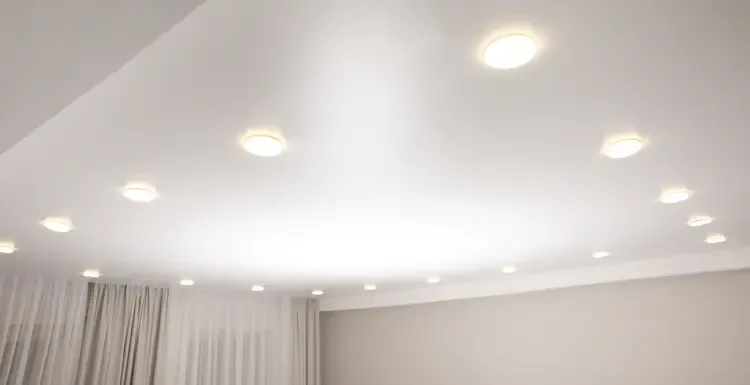There are many types of ceiling lights; we’ll show you 11 of the most common types of home lighting fixtures, and choosing which type to use depends upon your specific needs in our guide below.
Why Are Ceiling Lights Important?
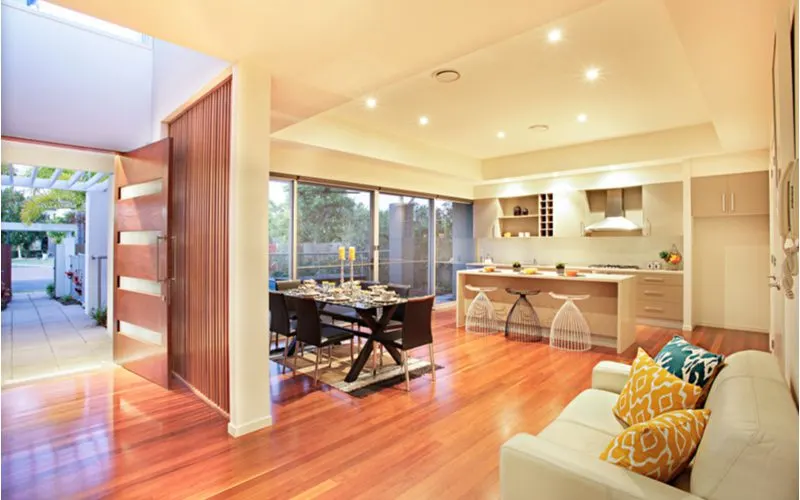
JR-Stock/Shutterstock
Ceiling lights are vital for both practical and aesthetic purposes. You must also consider existing decor and architectural elements.
Since they are usually the primary light source in a room, choosing an appropriate one can enhance the ambiance as well as accommodate the lighting needs of occupants.
There are many different types of ceiling lights that each serve a specific purpose. The common options for your home are downlights, uplights, recessed lighting fixtures, track lighting systems, flush mounts, chandeliers, and pendants.
Ceiling lights should be mounted in areas that receive the least amount of sunlight. For example, if there is no natural lighting in a hallway, then adding a ceiling mount light can provide adequate illumination during the evening hours.
As you begin the process of finding your room lights, you have the freedom to choose more than one light fixture to install in your ceiling.
Think about the different activities you will do in the room and other light sources when deciding on which ceiling lights you should purchase.
What Types of Ceiling Lights Are Available?
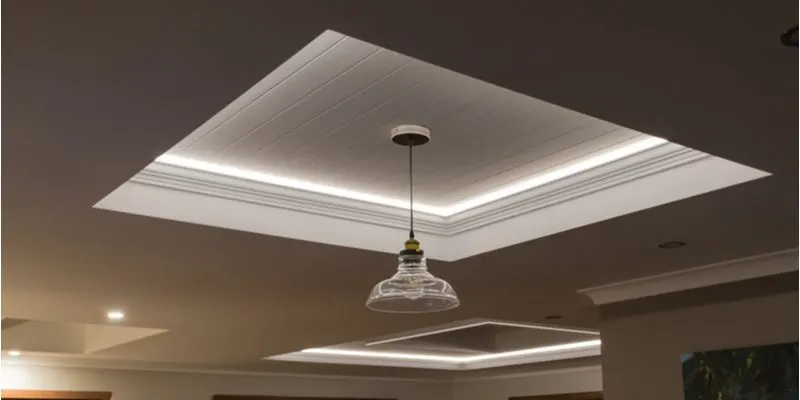
Ric Jacyno/Shutterstock
There are several types of ceiling lights to choose from. Consider your needs and home design before making a decision.
1. Downlights
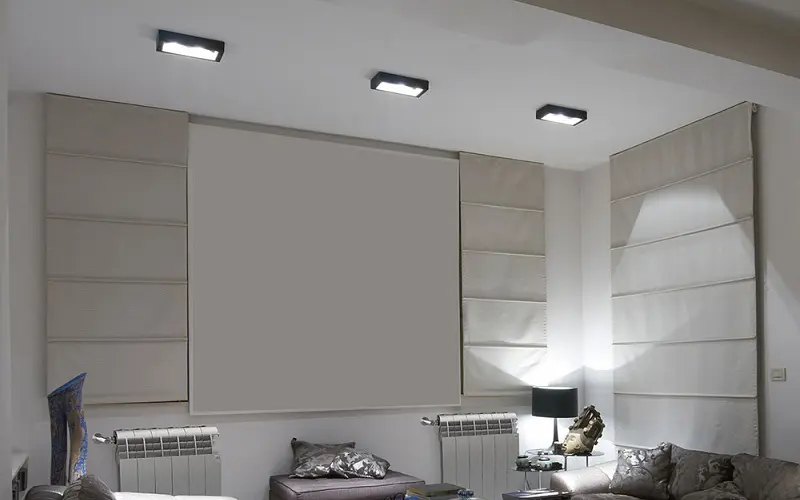
Marko Poplasen/Shutterstock
Downlights are the basic type of ceiling light that emits direct illumination downward. They are most commonly found in kitchens, bathrooms, and hallways.
2. Up-lights
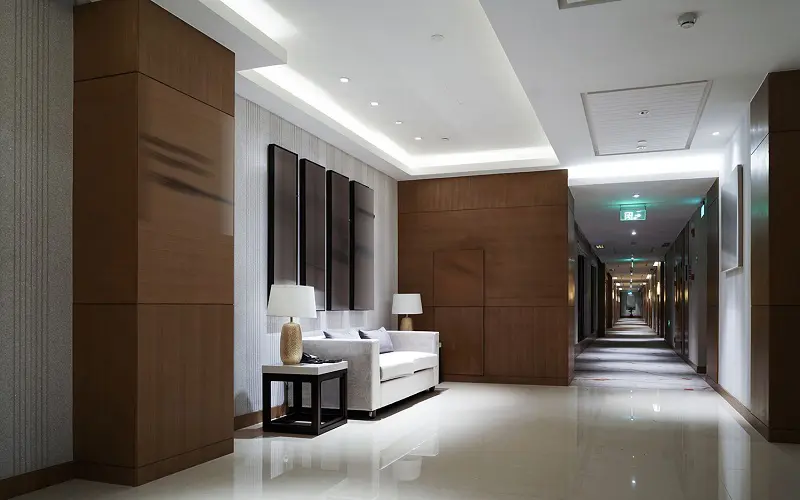
August_0802/Shutterstock
Up-lights are installed with the light source facing upward. These lights illuminate the ceilings, producing an ambient glow for living spaces, bedrooms, and office areas.
They work well for highlighting architectural elements like crown moldings or columns. They come in a variety of finishes and shapes to suit your style.
3. Chandelier
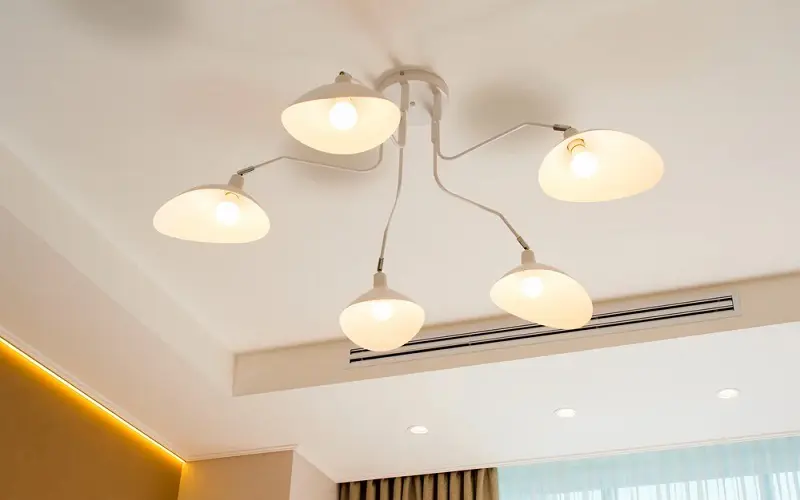
PA/Shutterstock
A chandelier hangs from a chain or metal rod. It is the most decorative lighting fixture and can add a touch of class to any room. Chandeliers are often mistaken for pendant lights, but they have significantly different purposes.
Chandeliers feature several light bulbs that hang from a metal bar or chain. They provide ample illumination in foyers and entry halls.
They also light up living rooms when you need extra illumination during social gatherings. Some of the lights may resemble candles.
4. Pendant Lights
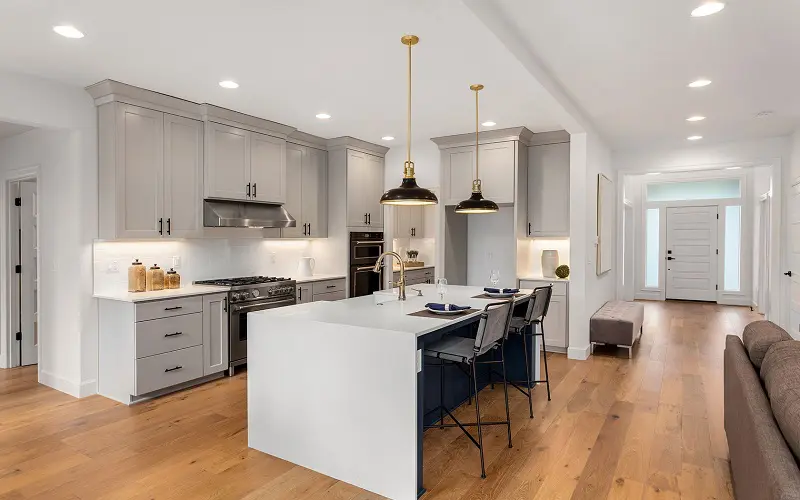
Breadmakers/Shutterstock
Pendant lights also hang down like chandeliers. However, chandeliers consist of several light bulbs of varying sizes, while each pendant light contains one. Pair them with a bigger light source, such as flush lights.
They make good task lights for areas such as bathrooms. You can easily position them to perform regular activities. Just don’t place them too close to wet sources.
If you have a space that requires more than one light source, a pendant light is a good option. Many pendants come with adjustable settings for changing the height of the fixture’s full extension.
5. Flushmounts
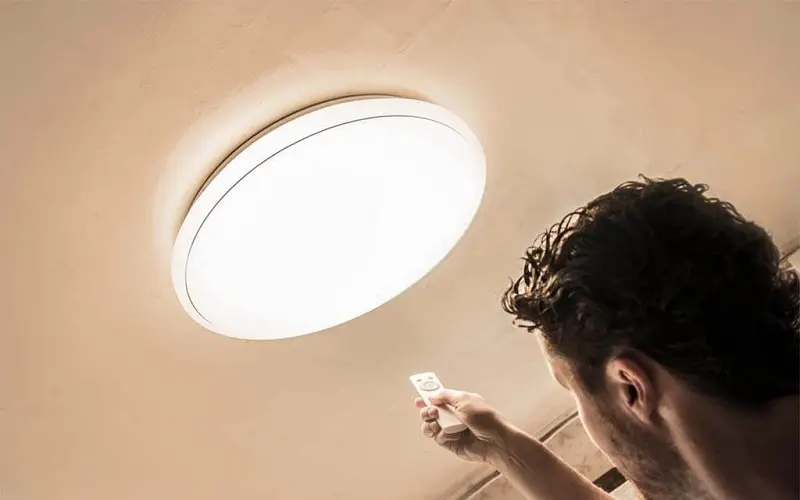
FotoHelin/Shutterstock
Flushmounts are mounted flush against the ceiling. They are a practical option for rooms with low ceilings. If the ceiling is less than 90 inches tall, a flush-mount light is your best bet.
These lights have a more streamlined appearance than other types of lights, so they work well with modern decor. A dome usually covers the center of the fixture. However, they don’t offer much decorative value.
6. Semi-Flush Mount

Olga Prava/Shutterstock
Semi-flush-mount lights are mounted on a stem rather than flush with the ceiling. The distance between the light’s highest point and the ceiling aids in the uplit effect. In addition, you can get good downward light.
As such, they provide better ambient light in living spaces. Many manufacturers offer more decorative options in the semi-flush style compared to flush mounts.
7. Mount Ceiling Fan With Light
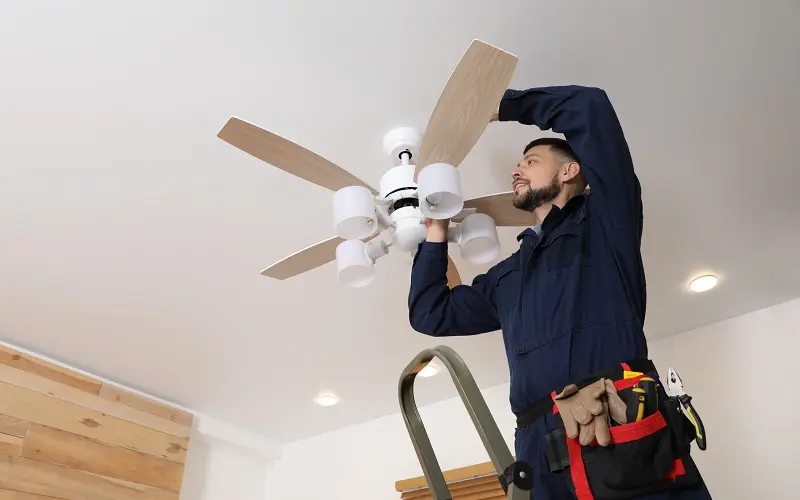
New Africa/Shutterstock
Ceiling fans have been part of American homes for many years. A ceiling fan with a light mounted on it is another practical option for rooms with low ceilings.
Normally, such lights will have a flush mount from the ceiling, but they also come with a semi-flush mount.
8. Recessed Lighting
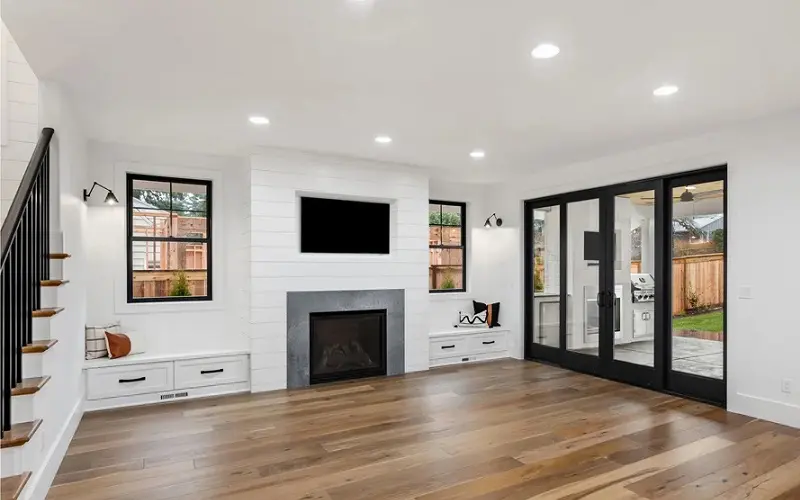
Breadmakers/Shutterstock
We mount recessed lights into hollow spaces in the ceiling. They feature a hinged cover that allows for easy bulb replacement. If you have a low ceiling, these lights are perfect. They are also referred to as “can” lights.
Since these lights are “inside” the ceiling, they don’t use much space. Many homeowners install them along with dimmers for precise control over the level of illumination in each room.
When you opt for this type of light, several lights are installed in rows along with the ceiling.
9. Utility Lighting
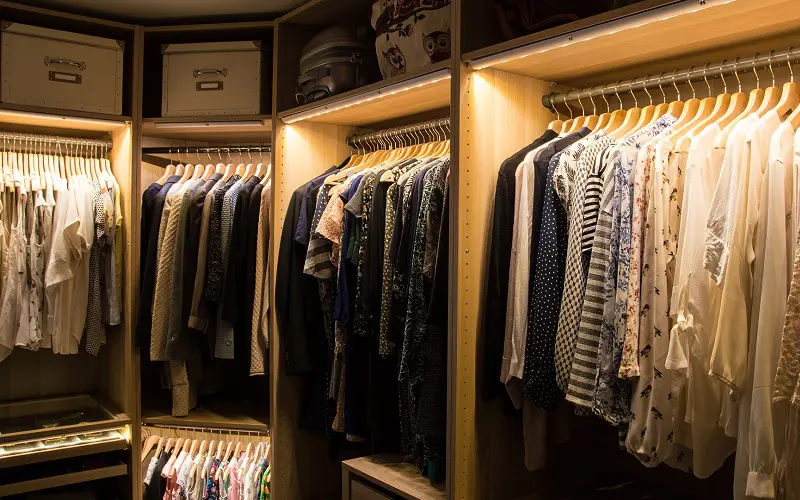
B. Forenius/Shutterstock
When it comes to laundry rooms, garages, stockrooms, or warehouses, utility lights are a common sight. These lights offer bright illumination but have a security cover to protect them from tampering and intrusion.
Find this type of fixture in any area that requires security lighting. Schools are also known to opt for this type of lighting. It is a way to keep students from vandalizing the lights.
10. Track Lighting
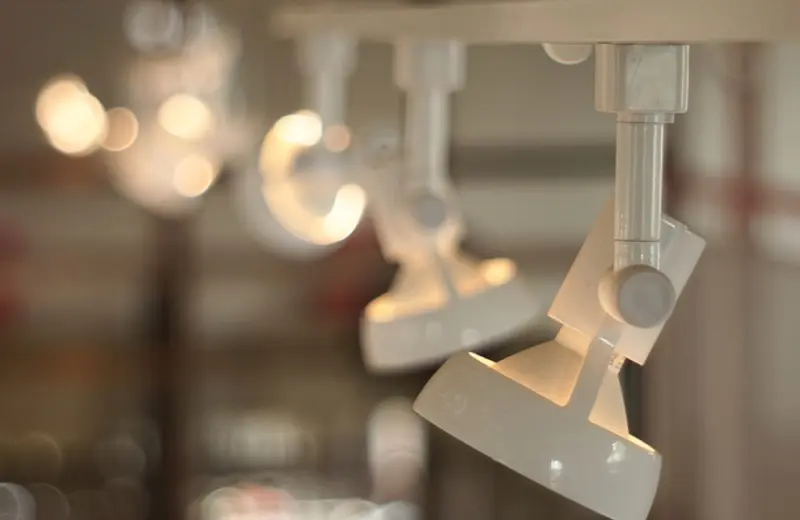
Sof_Gallery/Shutterstock
Track lighting consists of bulbs called “heads” or “bullets” connected to a “track.”. It allows you to adjust each fixture and aim them in several directions. Install these lights for more focused illumination than other types of lights.
These fixtures work best when mounted above workspaces and reading areas. They can deliver precisely-focused illumination to any task or activity. They are also popular in bedrooms, kitchens, and living rooms.
Offices and waiting rooms also benefit from the focused and precise lighting provided by track lights. Heads are the most common type of track lighting. They look like spotlights, and they offer a decent amount of illumination.
11. Island Lighting

Breadmakers/Shutterstock
Place these lights directly over the kitchen island. A lighting fixture that runs from one end of the island to the other is ideal, as it creates a dramatic effect.
These hang lower than track lighting and can act as a central point in a modern kitchen.
What About Ceiling Spotlights?
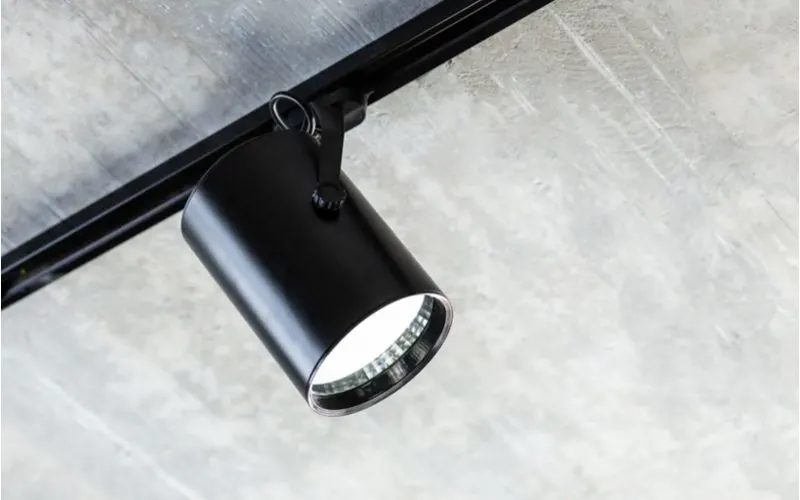
ANDRII KHRIAKOV/Shutterstock
Ceiling spotlights can sit in place of any other ceiling lighting fixture. They have a cylindrical metal body with a fixture for the light at the bottom.
Mount these lights in both flush and semi-flush, depending upon preference. They are great task or accent lighting fixtures that provide focused illumination wherever you install them.
In addition to adjustable head options, most spotlights have an optional lampshade that focuses the lighting toward a particular area.
Things to Consider When Shopping for Ceiling Lights
When shopping for ceiling lights, make sure you understand where you will place them and how they will serve your needs.
Here is a list of considerations for things to do or not do when choosing ceiling lights:
- Avoid buying the cheapest fixture you find, but don’t overpay for something that doesn’t match your decor or needs either.
- Don’t allow your ceiling lights to hang lower than five feet. It can interfere with both lighting and acoustics. You will get poor illumination performance overall.
- Install recessed lighting only in rooms with a minimum ceiling height of just over eight feet. The cover for recessed lights must be flush with the surface of the ceiling or the light itself. Often, the covers for recessed lights are thicker than eight inches.
- Don’t install ceiling fans that have lights in the same section of the ceiling as other lighting fixtures. The distance between a ceiling fan’s light kit and the nearest fixture should be at least three feet.
- You may need to install more than one type of ceiling light in a single space.
- Check out the features of your light source. Find out if it is adjustable, if you can dim them, and if it is LED compatible.
- Some fixtures require halogen or specialized bulbs. These bulbs can be expensive to replace. Be sure you know what kind of bulb is appropriate before you purchase.
- A mix of different ceiling fixture styles can give your living space depth and dimensions.
- Don’t install a ceiling light in any room that has no way to access and change the bulb when it burns out.
- Check out the light’s damp/location rating. You need to know if it is suitable only for dry or moist environments.
- Don’t install multiple light fixtures on the same track if you are trying to create a room with mood lighting, because they will create shadows that dull the effect.
- Don’t assume you know what kind of ceiling lights to install before you know how they will be used.
- Don’t allow multiple people to select the lighting fixtures for a room, even if you are working on a home improvement project together. This can result in a variety of opinions, which results in poor design choices.
Frequently Asked Questions
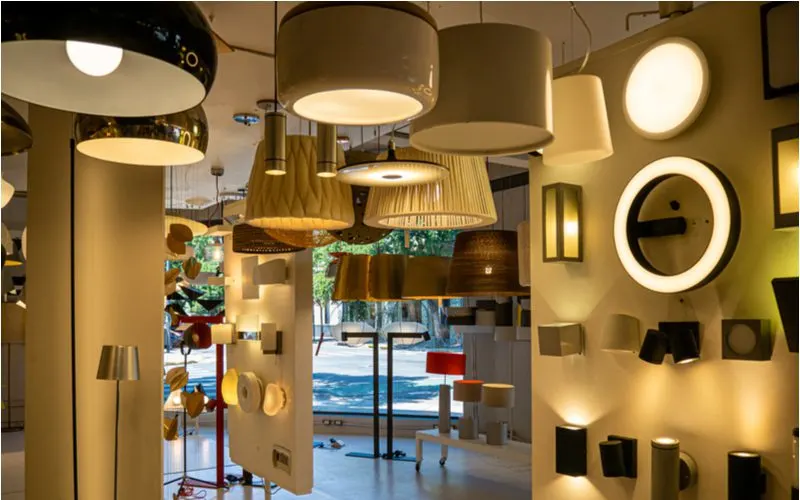
Pablo Ducros/Shutterstock
Since there are so many different types of ceiling lights, we naturally get a lot of questions about them. Here are the most common ones we’ve encountered:
What are the parts of a ceiling light called?
Your ceiling light consists of the lamp, lamp holder, reflector, junction, wiring, lens, and trim.
What are lights called in the ceiling?
Those lights “inside” the ceiling are called recessed lighting. You may also hear people calling them cans, recessed cans, ceiling cans, or simply lights.
What voltage should a ceiling light be?
Line voltage is standard in most fixtures (120 volts). Some need low voltage (12 volts), which necessitates the purchase of a transformer.
How many watts does a ceiling light need?
Overhead lighting should not exceed 100 watts. Your room will have enough bright illumination. If the light is on for a long time, however, a lower-wattage lamp of 75 or 60 watts may be a better option.
How big should a ceiling light be?
Multiply the height of your ceiling (in feet) by three. The ideal light is 3″ tall for every foot of distance between the floor and ceiling.
How do you light a high ceiling?
You have a few options. Consider the following:
- Fill the whole room with light. Don't just have one central ceiling fixture.
- Get recessed lights with a narrow beam angle and reflector trim.
- Don't install recessed lights too far away from the wall.
- Use LED bulbs or fixtures; they last long.
- Use light filters.
How do you install a ceiling diffuser?
You can either cut the diffuser into the sheetrock or buy the fixture separately and mount it on top of your tile ceiling.
In most ceilings, there are recessed areas made for ceiling diffusers.
Final Thoughts About Ceiling Lights
By understanding the different options available to you, you can choose a ceiling light that provides optimal lighting for your space.
There are several types of ceiling lights, each with its own benefits and drawbacks.
Think about whether you want task lighting, ambient lighting, decorative fixtures, or utilitarian light. Don’t be afraid to combine different ceiling lights for the ultimate mood, light, and design in the room.

